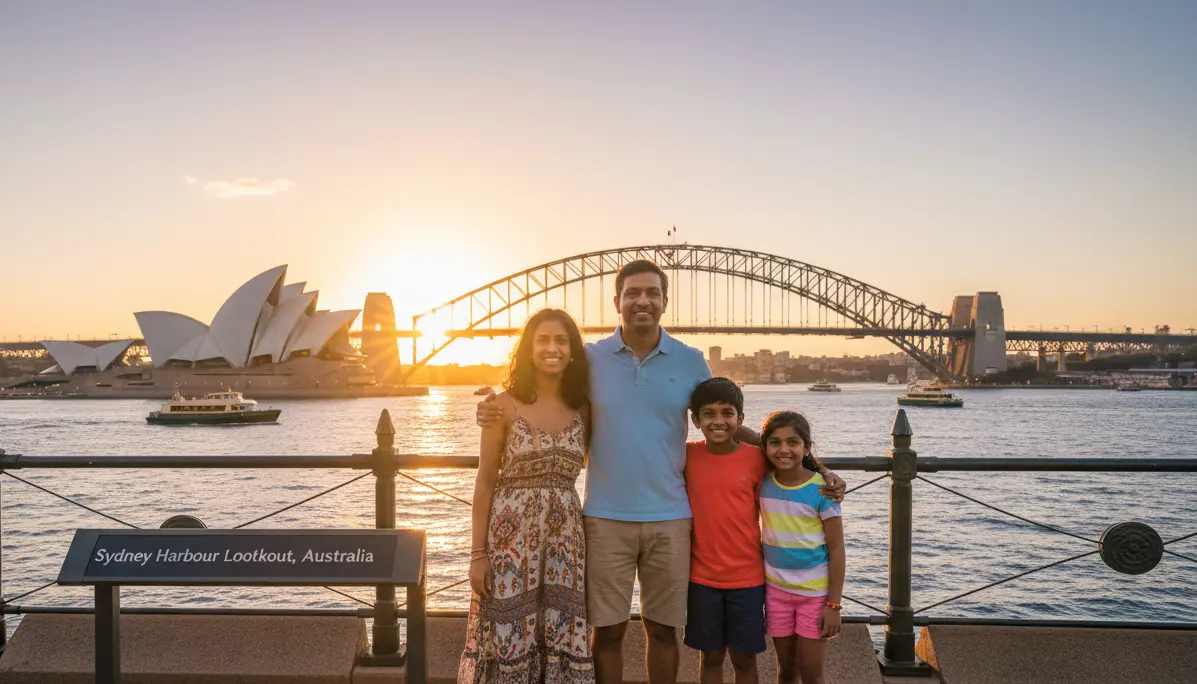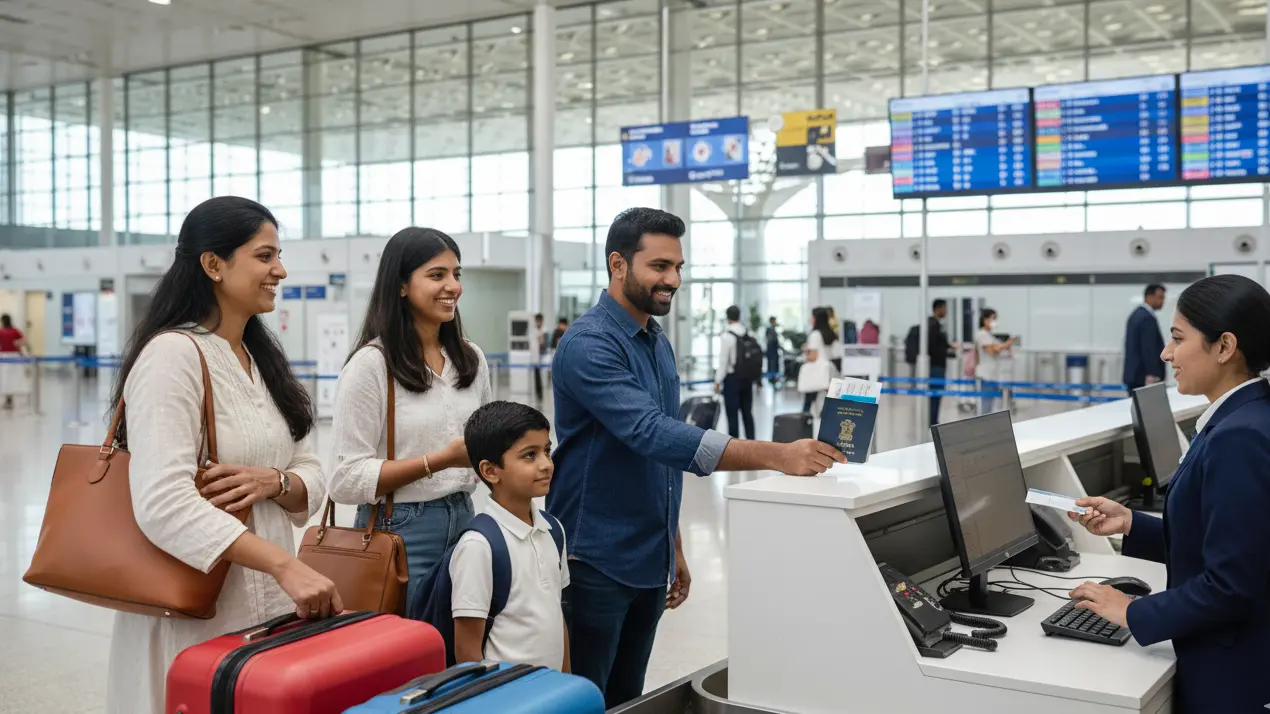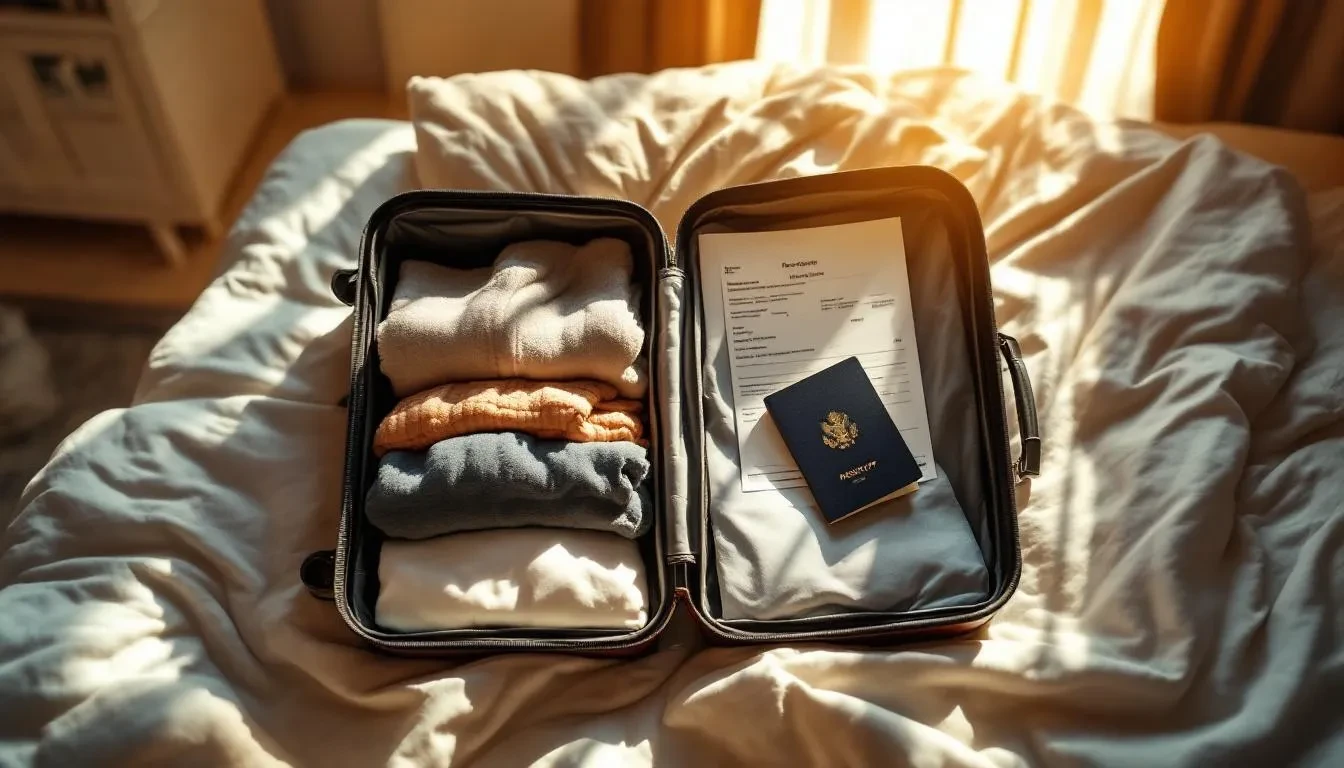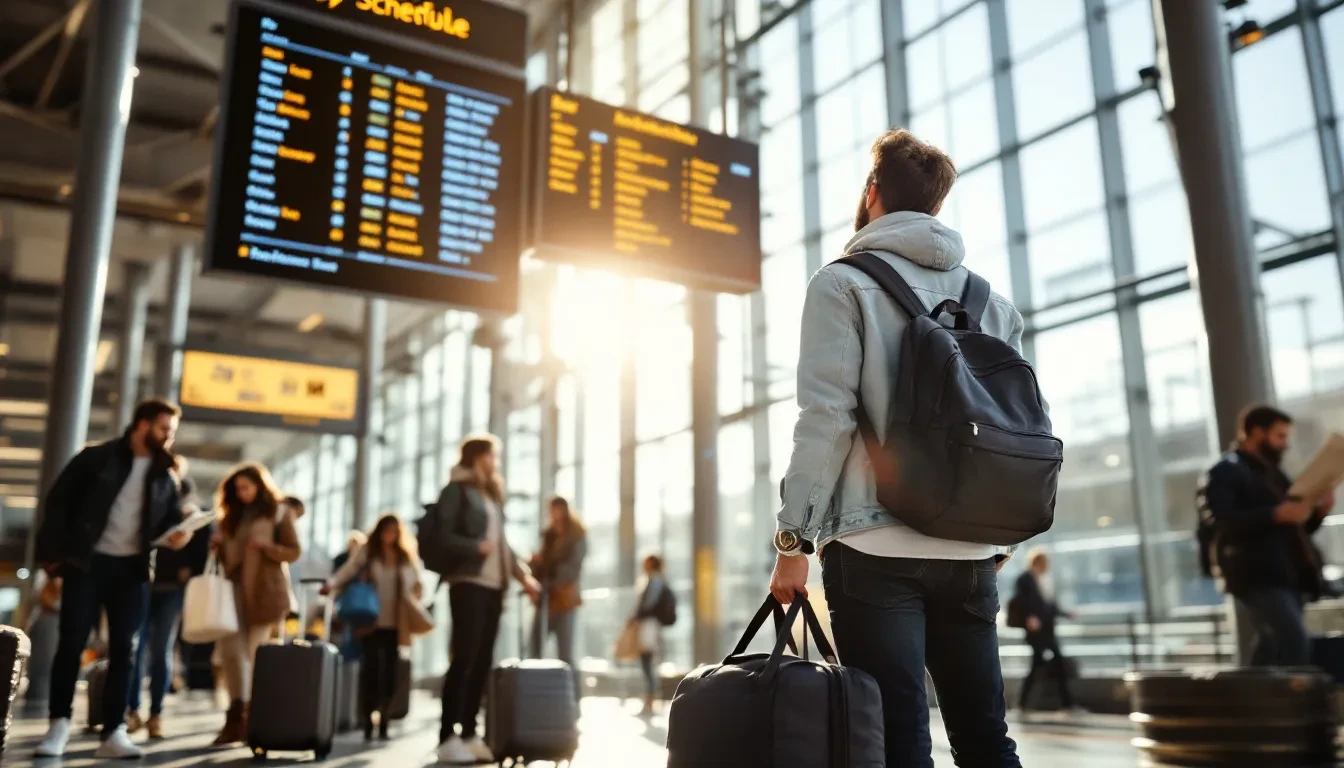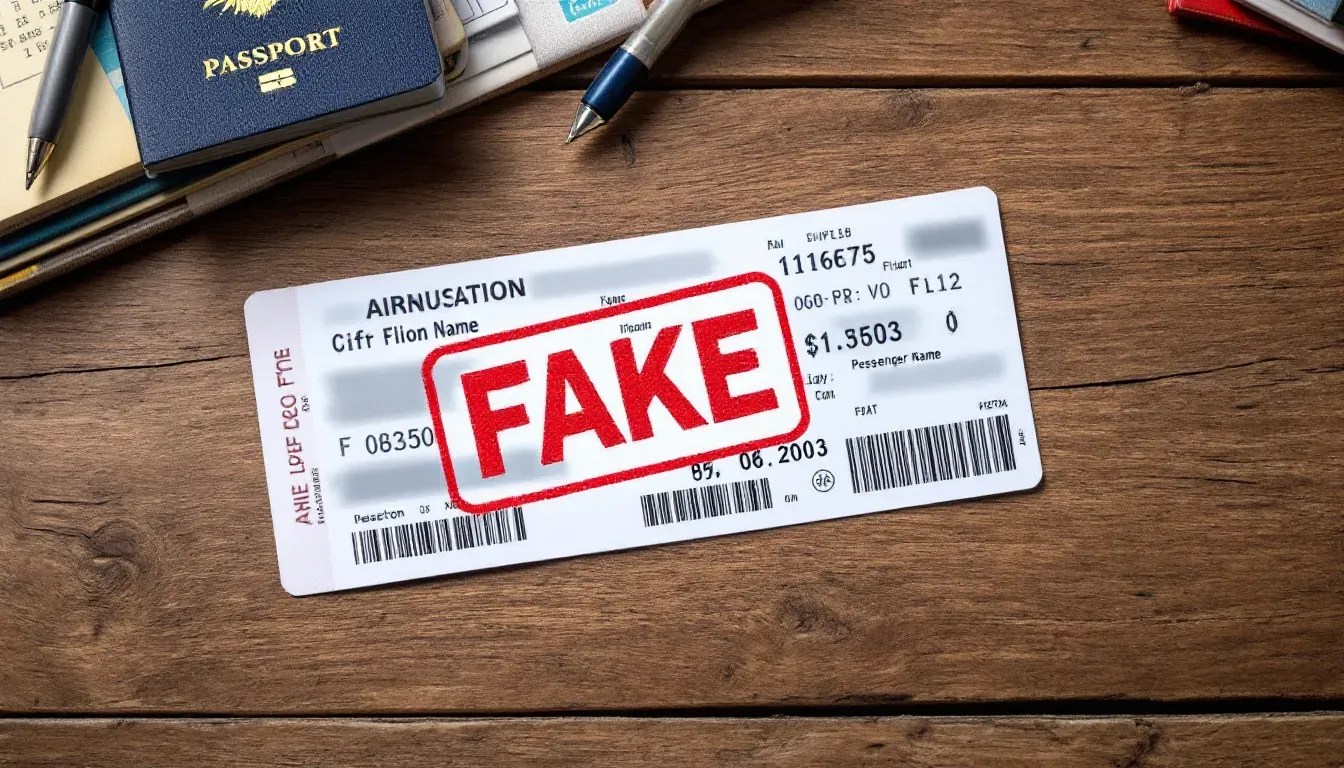Canada Tourist Visa Approved: Why a Smart Flight Reservation Makes All the Difference
You want your Canada TRV file to read like a plan that already works. Visa officers think in three buckets: will you leave on time, do your plans make sense, and what’s the risk if they bet on you? A smart flight reservation, like a dummy ticket, helps on all three. It anchors real dates, a believable route, and a visible return—without the full cost of a ticket. For more visa tips, check our FAQ or explore blogs on travel planning.
That clarity helps a student lining up a semester break, a first-time traveler testing long-haul waters, a parent visiting family, or a digital nomad syncing trips with client work. We show how to use a reservation without buying an expensive ticket too early. Learn about our team's expertise on our About Us page. We align it with lodging, funds, and leave letters. We flag red flags before they appear. Ready to make your case cleaner and stronger? Secure your visa file with a fast, verifiable dummy ticket booking.
A flight reservation is one of the most influential supporting documents for a Canada tourist visa because it shows IRCC that you have a clear, time-bound travel plan and a confirmed intention to return home. A verifiable flight itinerary with a real PNR demonstrates planned entry and exit dates, strengthens your proof of ties, and aligns your travel schedule with your financial documents and purpose of visit. Reliable providers such as BookForVisa.com issue embassy-accepted flight reservations that meet IRCC formatting standards—without requiring you to buy an expensive, non-refundable ticket before visa approval.
Last updated: November 2025 — validated against current IRCC visitor visa guidelines and travel-intent documentation criteria.
Table of Contents
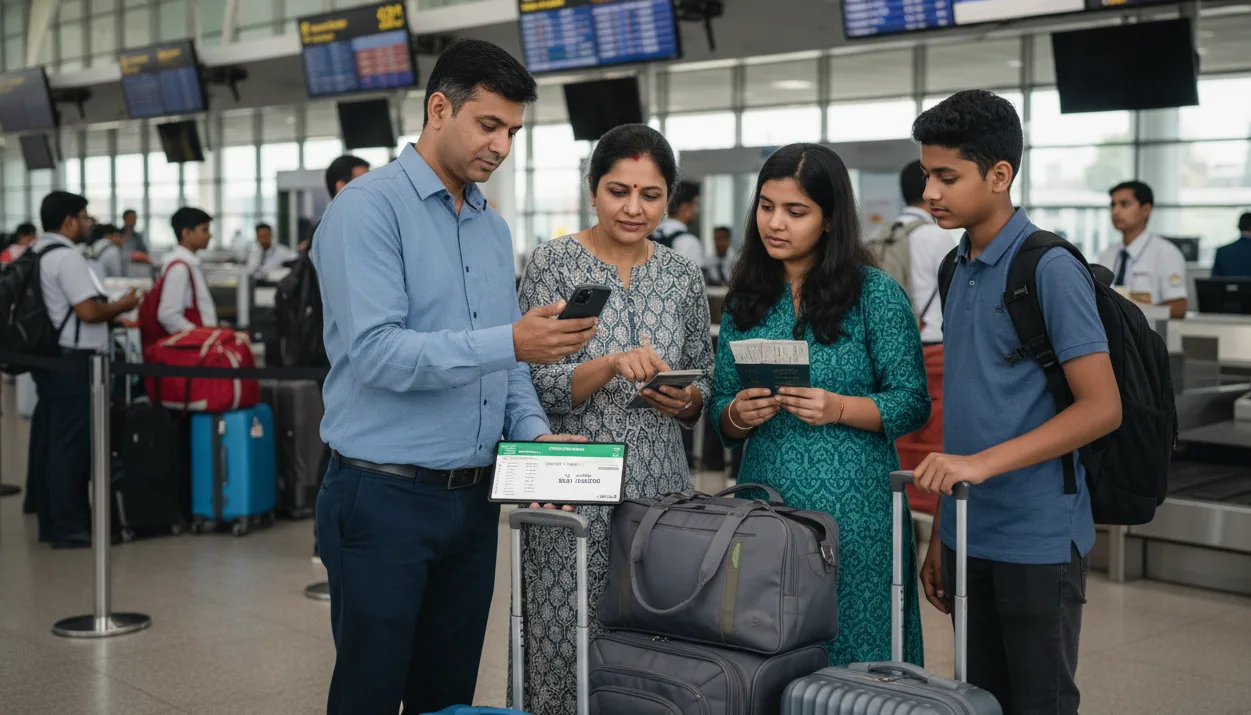
Why A Flight Reservation From India Quietly Tips The Scales In Your Favor
You do not win a Canada TRV with poetry. You win it with a file that looks complete, plausible, and low risk. A smart flight reservation helps you get there. It anchors time. It shows a real route home. It signals that your plan works in the real world, not only on paper. Need a credible itinerary today? Book a dummy ticket in minutes.
Make Return Intent Feel Real, Not Theoretical
Officers approve visitors who look temporary. Your reservation gives that story a spine. A visible return date shows when you exit. A round trip with credible timing creates a natural endpoint for your stay.
You can strengthen this even more:
- Choose a return that aligns with school calendars, client deadlines, or family obligations in India.
- Add a one-day buffer before you resume work or classes.
- Keep the stay length reasonable for your purpose. Three weeks for tourism reads better than three months with nothing planned.
When your return is easy to understand, your temporary intent is easier to believe.
Show That Your Itinerary Could Actually Happen
Plans fail when they ignore logistics. Your reservation proves the logistics are in place. It puts your arrival in the right city for your first night. It matches your season. It respects airport realities.
From India, sensible routings tell a clear story:
- Delhi or Mumbai to Toronto or Vancouver via DOH, DXB, IST, LHR, or FRA is normal.
- Bengaluru, Hyderabad, Chennai, and Kolkata often connect through the same hubs.
- Landing at Toronto but sleeping that night in Ottawa is fine if you show the domestic hop or train plan.
Tourist plans also need season logic. Visiting Banff in January? Your reservation should land you with enough daylight to reach lodging safely. Planning summer in Ontario? Arrive early enough to catch a same-day bus or train without rushing.
Reduce Perceived Risk In A Single Glance
Officers look for uncertainty. Uncertainty raises risk. A clean reservation reduces that uncertainty fast.
What reads as low risk:
- Dates that match your leave letter and hotel confirmations.
- A route with layovers that are generous, not reckless.
- A return that lands you in India before your work or classes resume.
What raises risk:
- Two competing bookings for the same period.
- Fantasy connections that leave no time for immigration or terminal changes.
- A long stay with a vague purpose and no matching accommodation.
Keep it simple. One plan. One path in. One path out.
Use India–Canada Corridors That Make Sense
You do not need the cheapest itinerary. You need the believable one. From India, officers expect you to use the big hubs and the known partners, as outlined by IATA.
Good examples:
- DEL → DOH → YYZ with a 3-hour layover.
- BOM → DXB → YVR with a 2.5-hour layover.
- BLR → IST → YUL with a 3-hour layover.
Avoid traps:
- Sub-90-minute connections at giant hubs during peak periods.
- Final legs that arrive at midnight when your hotel is far from the airport.
- Mixed carriers that do not interline baggage when you plan a tight transfer.
When the path looks familiar and practical, your file feels stronger.
Start In A Tier-2 Or Tier-3 City Without Looking Disorganized
Many Indian travelers begin outside the metros. That is normal. Show the link to your international gateway, and you are fine.
Make it tidy:
- Positioning flight to DEL or BOM the day before your long-haul.
- Enough buffer hours if you choose same-day.
- A note in the cover letter that explains the domestic leg and the reason for the chosen gateway.
You are not proving aviation expertise. You are proving reliable planning.
Let The Reservation Support Your Budget Story
Your bank statements tell the officer how you fund the trip. Your reservation tells the officer what that trip roughly costs. The two should echo each other.
Practical steps:
- Check typical economy fares for your route and season.
- Keep a comfortable margin in your INR balance after you account for hotels, local travel, and insurance.
- If a sponsor helps with stay costs, still show your own airfare capacity. Officers prefer shared responsibility.
When your funds and your reservation point to the same reality, questions fade.
Speak To Four Common Indian Profiles Without Changing Your Tone
One strong plan works across many traveler types. Adjust the details, not the logic.
Students on break
Time your return before classes resume. Tie the date to a university email or academic calendar. Keep fares modest. Use economy cabins that match a student's budget. The reservation becomes proof that you intend to be back in class.
First-time applicants
Play it safe with layovers. Avoid the last flights of the day for tight connections. Choose a route that arrives early evening to allow an easy transfer to your hotel. The reservation shows conservative, careful behavior.
Family visitors
If you travel with a spouse, parents, or kids, link the PNRs or keep itineraries identical. Put the children’s school calendar in the cover letter and reflect the return date. The reservation reads as one trip, not three overlapping ones.
Digital nomads on a short work-and-travel stint
Pick dates that do not collide with client deliverables. Keep the length tight. Include reliable internet in your lodging plan and mention it. Your reservation shows discipline, not drifting.
Choose A Round-Trip Over a One-Way Unless You Have A Strong Reason
Tourists leave. One-way bookings do not say that. If you must go one way, back it with evidence:
- Confirmed onward travel to the United States.
- A paid cruise ticket with a fixed departure.
- A work return date in India, plus a second region ticket already planned.
If you cannot defend a one-way, avoid it. Round-trip is the clean signal.
Use Open-Jaw And Multi-City The Right Way
Canada is big. Sometimes you land in one city and fly out of another. That is fine when your file shows the middle piece.
Do this well:
- Arrive in Toronto. Depart from Vancouver. Show the domestic segment plan between them.
- Sync hotels to the cities in order.
- Keep the number of internal hops realistic for your travel window.
This pattern reads like a designed loop, not a scatter of flights.
Keep Layovers Humane And Visa-Aware
Your layover choices speak to your awareness. They should respect airport size, transit rules, and your stamina.
Guidelines that work:
- Two to four hours at major hubs like DOH, DXB, IST, LHR, and FRA.
- More time if you change terminals or pass security again.
- Avoid Schengen transits that require a visa if you do not hold one. Choose non-Schengen hubs instead.
If you land in Canada and continue domestically, remember immigration and baggage. Add time. Do not plan a 70-minute turn.
Let The Reservation Prove That You Think Ahead
A file that passes shows the same habits everywhere. Your reservation sets the tone.
Reflect that discipline:
- Consistent dates in forms, hotels, insurance, and flights.
- Names and passport numbers typed exactly as in your passport.
- PDF names that make sense, such as “Ravi-Patel_Flight-Plan_DEL-YYZ-DEL_May2026.pdf.”
Small touches add up. Officers notice neat work.
Handle Peak Seasons Like Someone Who Has Done This Before
India travels hard in summer, around Diwali, and during long school breaks. Fares rise. Holds shrink. Capacity gets tight.
Plan for that:
- Start earlier.
- Expect higher fare ranges in your budget notes.
- Choose longer layovers in crowded hubs to avoid misconnects.
A reservation that respects the season reads like real travel, not a guess.
Keep The Story Coherent From First Page To Last
You do not need flair. You need alignment. Your reservation must agree with your reason to visit, your days on the ground, your money, and your obligations in India.
A quick checklist before you move on:
- Route matches your stated plan.
- Dates match hotels, insurance, and leave.
- Fare level fits your finances.
- One plan only. No duplicates. No conflicts.
When your reservation passes this test, it raises the whole file. It turns your application from an idea into a schedule. And it helps an officer say yes with confidence.
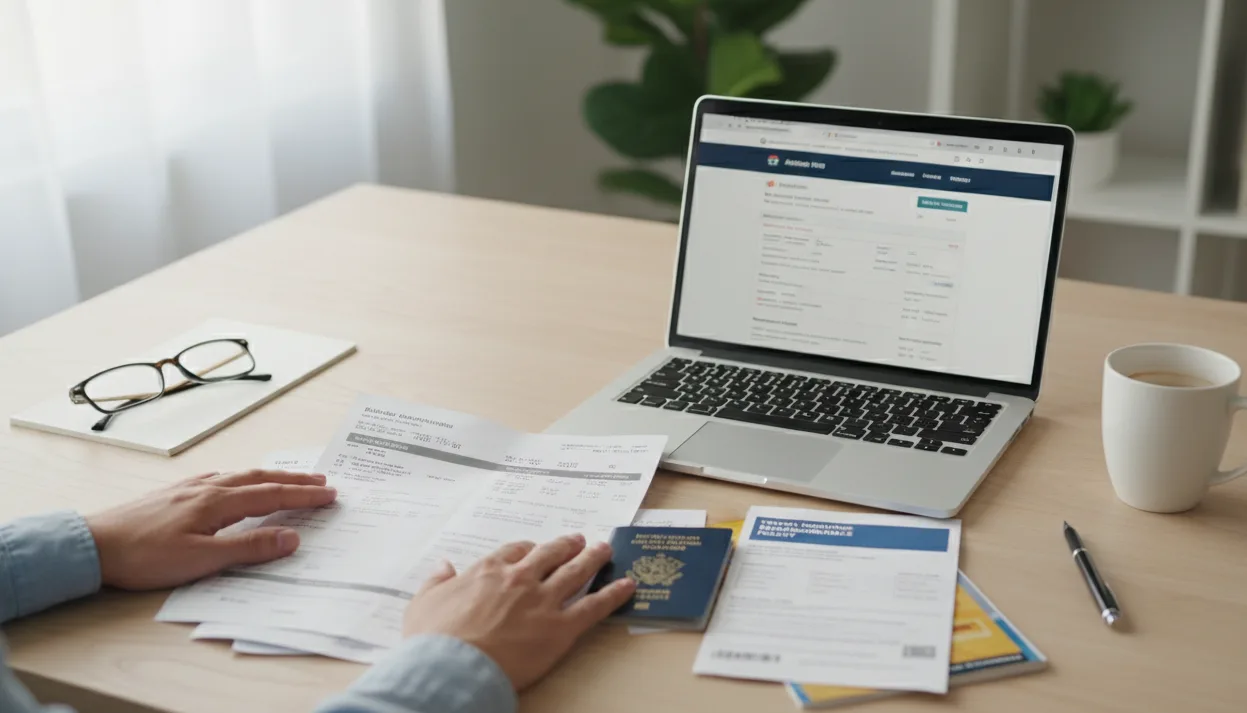
Status And Options: Proof That Carries Weight Without Buying The Ticket
You want flexibility without looking vague. You want credibility without burning cash. The good news is you have more than one way to show intended travel. The key is choosing options that are realistic, traceable, and aligned with your story. Keep your dates flexible and your plan believable with a trusted dummy ticket booking. 👉 Order your dummy ticket today for instant PNR verification.
Refundable Tickets: High Control, Higher Cash Parked
Refundable fares still work well when you can tolerate a temporary hold on funds. They signal that your plan is live and not theoretical.
How to make them work for Indian travelers:
- Book in the same name order as your passport.
- Confirm refund rules in writing. Check the time zone reference so a midnight deadline does not slip.
- Use a card with a clean credit limit. Indian issuers sometimes take a full cycle to post credits.
- Keep a screenshot of the fare rules page. The officer will not read it, but you will need it if you must cancel.
Refundable tickets reduce doubt. They also tie up money. If you need liquidity for proof of funds, consider a lighter option.
Airline Holds: Short Windows, Strong Signal
Many full-service carriers let you place a time-limited hold. You get a booking reference and an itinerary that looks like a paid ticket. The clock runs fast.
What to know from India:
- Typical windows are 24 to 72 hours. During the summer and December, they can shrink.
- Holds often expire at local time for the airline, not IST. Confirm the cutoff.
- Some carriers charge a small hold fee. Keep the receipt in your file.
- If the hold expires, do not leave stale copies in your documents. Replace them with a fresh reservation.
Holds work best near submission or biometrics. They let you show a live plan without prepaying the whole fare.
Verifiable Temporary Reservations: Light On Cost, Heavy On Credibility
Temporary reservations issued through real airline or GDS systems offer the sweet spot. The PNR is traceable. The itinerary is realistic. Your cash is free for other proofs.
How to make this option bulletproof:
- Always insist on a PNR that pulls up on the airline website or a global check tool.
- Match cities, dates, and names across your file.
- Keep the routing believable. Choose hubs that Indians actually use.
- Respect the validity. If it expires in days, refresh the same path and note the refresh date in your cover letter.
This is often the most efficient route for students, first-time applicants, and families who need clean documents without heavy spending.
Realistic Routing Is Not Optional
Officers see thousands of itineraries. They know what looks possible. Keep your plan inside those lines.
Practical routing habits:
- Use one alliance for long-haul if you can. Interline baggage beats two separate tickets with a risky handoff.
- Aim for two to four hours at major hubs like Doha, Dubai, Istanbul, London, or Frankfurt.
- Add more time if you switch terminals or go through security again.
- Avoid midnight arrivals if your lodging sits far from the airport. Late arrivals read fine if the hotel is close and transportation is realistic.
You want your reservation to feel like a trip you would actually take.
Round Trip Beats One Way For Visitors
Tourism is about leaving. Round-trip shows that in one line. One way can work, but only with strong add-ons.
Use one way only if you can show:
- Confirmed onward travel to a third country.
- A dated cruise or tour that departs after your Canadian stay.
- A paid domestic return inside North America with a separate India ticket already planned.
If none of that fits, choose a round trip. It answers the big question before the officer has to ask.
Multi-City And Open-Jaw: Freedom With A Map
Landing in Toronto and flying out of Vancouver is common. Canada is vast. The trick is to join the dots.
Make it coherent:
- Show a domestic segment plan between the two ends. Flight, train, or a rental car with realistic distances.
- Align hotel bookings to the sequence. No jumps that ignore geography.
- Keep the number of internal hops in line with your days. Three cities in ten days is fine. Seven cities are noise.
Open-jaw can look sophisticated when the middle section is explained. Without that, it looks unfinished.
Families And Groups: One Story, Many Seats
When you travel with family, the officer reviews your files as a set. The reservation should read like one plan.
Do the basics well:
- Use a single PNR for everyone when possible, or clearly linked PNRs.
- Keep dates identical unless you explain the difference in your cover letter.
- Show who pays for whom. Reflect that in the bank trail.
- If an elderly parent needs assistance, choose layovers with shorter walks or request special assistance in advance.
Coherence is the win. One plan. One rhythm. One timeline.
Students, First-Timers, Nomads: Tailor The Same Core Logic
The core rules do not change. The emphasis does.
For students:
- Tie return date to the academic calendar.
- Keep cabins modest. The economy looks consistent with student budgets.
- Avoid red-eye returns that collide with class start times.
For first-time applicants:
- Favor predictable hubs.
- Avoid the last flights of the day for tight connections.
- Arrive in the early evening to reach your hotel without stress.
For digital nomads:
- Keep the stay tight and the purpose clear.
- Choose flights that do not overlap with client deliverables.
- Mention reliable internet in the lodging. It supports your reason for a short, disciplined visit.
For family visitors:
- Sync everyone’s dates with school calendars in India.
- Note any family events by date.
- Choose seats close together if you can. It signals a coordinated trip.
Quality Signals That Officers Notice
Tiny details add credibility. They show that you prepared well.
Lock in these signals:
- Names exactly as in the passport.
- Dates are consistent across forms, hotels, insurance, and flights.
- Reasonable fare level based on season.
- Clear PDF names. Use a pattern like “Sonia-Gupta_Itinerary_DEL-YYZ-DEL_July2026.pdf.”
- No duplicate or conflicting bookings.
When these boxes are ticked, the reservation does more than fill a slot. It strengthens the whole file.
If You Need A Verifiable Reservation Fast, Trust BookForVisa.com
Sometimes you need a live, checkable PNR without the cost of a full ticket before a decision. That is when a purpose-built service makes sense.
Here is what to look for:
- Instant delivery, so your file does not wait.
- A PNR that verifies with the airline.
- The ability to refresh dates if processing shifts.
- Simple, transparent pricing.
BookForVisa.com provides verifiable flight reservations designed for visa applications. You receive a live, checkable PNR and a clean PDF ready for upload. Unlimited date changes help if your biometrics or processing timeline moves. Pricing is transparent at $15, which is about ₹1,300. Use this when you need credibility now and flexibility later. Use it once in the file, not in multiple versions.
Avoid Looks That Create Doubt
Some patterns create questions. You can avoid them with small choices.
Steer clear of:
- One itinerary for submission and another for biometrics week, without a clear refresh note.
- Hyper-premium cabins with modest bank balances.
- Exotic routings that add airports without saving time or money.
- Schengen transits if you do not hold a transit visa. Choose non-Schengen hubs instead.
- Tight Canada connections after a long haul. Clear immigration and recheck bags with time to spare.
If you must adjust routing after submission, keep the skeleton the same. Same cities. Similar timing. Same length of stay. Explain the refresh in one line in your cover letter.
Bring It All Together Without Noise
You now have choices that fit different risk and budget levels. The right option is the one that tells a believable story and supports the rest of your file.
A quick wrap-up checklist:
- Pick one strategy. Refundable, hold, or verifiable reservation.
- Keep routing familiar and humane for India to Canada.
- Make a round trip your default. Use one way only with firm onward proof.
- For open-jaw, show the middle leg.
- Sync family plans with linked bookings and aligned dates.
- Lock consistency across forms, hotels, insurance, and funds.
- Refresh reservations cleanly if timelines shift.
Choose the path that keeps your finances flexible and your narrative tight. When your reservation is traceable, realistic, and aligned, it does more than prove travel intent. It helps an officer trust your plan in one quick scan.
The Alignment Test: Make Your Whole File March In Step
Strong applications look like orchestra scores. Every section plays the same tune at the same tempo. Your flight reservation sets the rhythm. Now we line up lodging, day plans, funds, employment letters, insurance, and travel history so the officer hears one clean song. Heading to VFS soon? Book a dummy ticket and show a live PNR.
Make Beds Align With Boarding Passes
Hotels should echo your flight timings. That means practical arrivals and exits.
- Land at Toronto in the afternoon. Book the first night in Toronto.
- Late-night arrivals are fine. Choose lodging close to the airport or show the airport train plan.
- If you land in one city and sleep in another, include the domestic hop or rail ticket reference.
Check-in and check-out dates should wrap around your flights. If your flight home leaves at 23:55, keep the hotel until that day. If you check out at noon and your flight is at midnight, mention a luggage plan or lounge day. It shows you thought ahead.
Build A Day-By-Day Plan That Mirrors Reality
Your daily plan should read like a real trip. Use a simple structure. Dates on the left. City in the middle. Key activities on the right.
- Group nearby attractions to avoid zigzagging.
- Factor in Canadian winter light and road conditions if you visit cold regions.
- Leave white space on travel days. Long-haul fatigue is real.
A one-page grid works. It lets an officer verify that your reservation, hotels, and activities share the same spine.
Let Your Bank Balance Speak The Same Language As Your Fare
Funds should match airfare and ground costs. Not exact amounts. A sensible range.
- Check the typical economy fare band for your route and season. Note it in the cover letter.
- Keep a healthy surplus in INR after adding hotels, meals, insurance, and domestic travel.
- If a host covers lodging, still show airfare capacity in your account.
- For couples or families, display who pays. One primary account is fine if the payments are clear.
Large, fresh deposits that appear a week before submission invite questions. Use stable balances, salary credits, and savings patterns. Add a short line that explains any legitimate lump sums, like a fixed deposit maturity.
Tie Flight Dates To Your Leave Letter Without Gaps
Employment letters carry weight when they match your flight. Align them neatly.
- The leave letter should show start and end dates that bracket your travel days.
- Add a buffer day after you land in India. It reduces risk and reads professionally.
- Keep the letter on the company letterhead with a contact.
- For government employees, add the sanction order and the HR contact.
Self-employed travelers can use GST returns, client schedules, or vendor contracts to show why the return date matters. Keep it brief and pointed.
Students, We Sync Your Calendar Too
If you study in India, your return should meet your academic calendar. Link it visibly.
- Attach a term schedule or an email from the department.
- State that you will return on time for classes or exams.
- Keep the stay short and the fare class modest. It fits the student profile.
Your reservation then becomes a signpost that points back to campus. Officers appreciate that clarity.
Travel History Should Tell The Same Story Again
Past trips are your credibility bank. Use them.
- If you kept reservations and insurance for Schengen, the UK, or the USA, mirror that method.
- If you are new to long-haul, choose cautious layovers and simple routes.
- Show on-time returns in previous visas where possible with entry and exit stamps.
Consistency across years says you plan and you return. Your new reservation should feel like the next chapter of the same book.
Insurance Windows That Wrap Around Your Flights
Insurance should begin before you board and finish after you land. Keep it simple.
- Start the policy on your departure date from India.
- End it on the day after your scheduled return to India.
- If you refresh flight dates, refresh insurance too.
- Match traveler names exactly as in the passport.
This tiny alignment is a quiet credibility gain. Officers notice when dates hold hands.
Families And Groups: One Plan, Many Proofs
When you travel together, your documents should move together.
- Use a shared or linked PNR. Add all names in the cover letter.
- Keep hotel bookings for the same dates. Note room types that fit the group.
- Show a single payer with a clean trail or a split plan that is clearly explained.
- For school-age children, attach school letters and link the return date to reopening.
If grandparents join, plan humane layovers and seat requests. Say it once in the cover letter. It shows care and removes doubt.
Sponsors, Hosts, And Etiquette That Helps
Invitations are common for India to Canada. Keep the structure disciplined.
- The host letter should state who covers what.
- Your bank still shows airfare and personal money.
- The flight reservation should match the host’s city or include the domestic connection in Canada.
- If multiple relatives invite you, pick one primary host and keep the rest for visits in your day plan.
When roles are clean, the officer spends less time guessing and more time agreeing.
Keep Names, Numbers, And Formats Surgical
Data hygiene turns a good file into a great one.
- Names must match the passport’s order and spelling.
- Passport numbers are the same across forms, flights, and insurance.
- Use consistent date formats. Prefer DD MMM YYYY for clarity.
- Name your PDFs so a stranger understands them.
A tidy index inside your combined PDF makes review easier. Short labels. Straightforward order. No duplicates.
Currency, Cards, And The India-Specific Friction
Indian payment flows have quirks. Plan around them.
- Refunds on refundable tickets can take a statement cycle. Avoid tying up limits you need for everyday spending.
- Some cards need international transaction toggles. Switch them on before any booking tests.
- Use bank statements that show both INR balance and any USD or CAD holdings if you maintain them.
- If you rely on fixed deposits, add a simple note describing liquidity.
Your flight reservation should not strain your financial picture. It should complement it.
If Processing Moves, Refresh Without Breaking The Story
Timelines slip. Files still succeed when refreshes are clean.
- Keep the same routing. Keep the same length. Adjust only the dates.
- Replace the old PDF everywhere.
- Add one line in the cover letter: “Reservation refreshed on 12 Feb 2026. Itinerary and budget unchanged.”
- Refresh insurance to match.
- Avoid running two active versions at once.
The officer sees continuity, not chaos. That is the win.
Present The Chain Of Evidence Like A Path You Would Walk
Think like a reviewer with ten minutes and a checklist. Arrange evidence so each piece confirms the last.
- Start with the cover letter. Summarize route, dates, and purpose in three lines.
- Add the flight reservation next.
- Follow with hotels and the day-by-day grid.
- Then show insurance, bank statements, and leave letters.
- End with travel history scans and any host letters.
This order tells a simple story. It flows from plan to support to history. Your reservation leads the way.
Red Flags That Break Alignment And How To Fix Them
We all make small errors. Fix them before they grow.
- Mismatched dates between IMM answers and the reservation. Update the form or the plan.
- One-way booking with no onward ticket. Switch to round trip or add proof.
- Lodging city different from the arrival city on the same night. Insert a local transfer plan.
- Insurance is shorter than the stay. Extend it.
- Two conflicting PNRs. Keep one. Close the other.
A focused five-minute audit can remove most issues. Do it before you upload.
Alignment Sweep Before You Click Submit
Run one last pass with a calm mind. Read as if you were the officer.
- Do the dates align across every document?
- Is the route believable for an Indian traveler?
- Does the budget match the fare level and season?
- Are family plans synchronized?
- Is there one clear story from day one to return day?
If the answer is yes across the board, your reservation stops being a single file. It becomes proof that the whole trip holds together. And that is exactly what a decision maker wants to see.
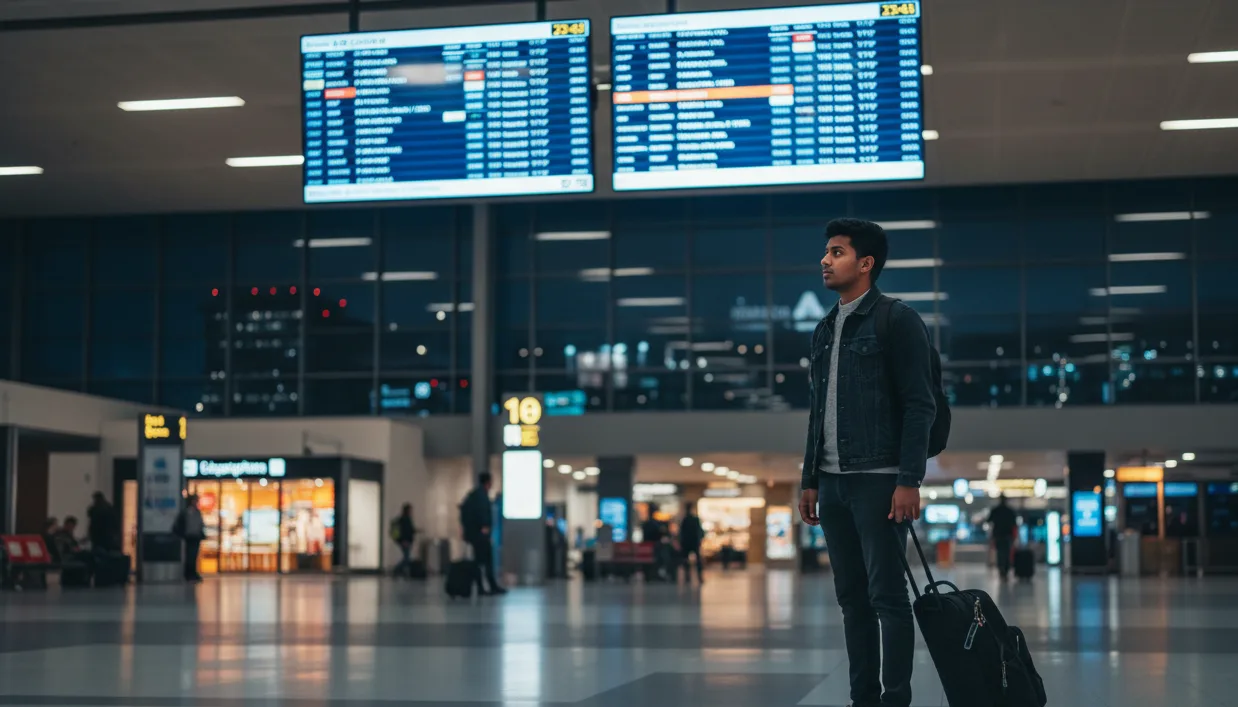
Timing And Mechanics: Lock The Dates, Keep The Flexibility
You want a reservation that helps today and still works if timelines shift. That means getting the timing right, picking the right validity window, and refreshing cleanly. We keep this practical and India-focused so your plan stays credible without tying up cash for a Canada visitor visa under real-world travel guidelines. Refresh your travel dates anytime—start with a simple dummy ticket booking.
Get It Before You Submit, Not After
The reservation should be alive when the officer opens your file. That is why timing matters during visa processing.
Aim for this rhythm:
- Generate the reservation a day or two before online submission so it mirrors the application process and the details in your application form.
- If you file first and book later, the dates in your forms can drift. Avoid that, especially when your family information form, digital photo, and other required documents are already locked.
- If you have a VFS appointment, keep the PNR valid during the appointment week. Officers and VAC staff do not need a paid ticket. They do value a traceable plan that matches a valid passport and a clean return ticket.
When you control timing, your file feels coordinated. That alone reduces questions.
How Long Holds And System Bookings Actually Live
Not all reservations age the same way. Know your window so your visitor visa plan stays consistent.
- Airline holds usually last 24 to 72 hours. The clock follows the airline’s local time. Confirm the exact cutoff.
- Some carriers shorten holds from June to August and late November to early January. Demand is high. Inventory moves.
- GDS-issued temporary bookings can live longer. Expect anything from 2 to 14 days, depending on the setup and whether multiple entries are contemplated for later changes.
- Fully refundable tickets are available as long as the fare rules allow. Read the fine print. Some refunds return as credit notes instead of cash to the card.
You do not need the longest window. You need a window that covers submission, biometrics, and the week after, in case of a quick review and changing processing time.
Refreshing Without Raising Eyebrows
Processing can slip. That is normal. You still want stability in your file for a temporary resident visa.
Refresh like a pro:
- Keep the same route and flight pattern if you can. Same hubs. Similar times.
- Shift only the dates. Keep the length of stay consistent so it still fits Canada tourist visa requirements.
- Replace the old PDFs everywhere. Forms, cover letter, and any combined files.
- Add one short line in the cover letter. “Reservation refreshed on 18 March 2026. No change to itinerary or budget.”
A quiet refresh shows discipline. Multiple conflicting versions look messy.
Avoid Paying For A Ticket Too Early
We all like certainty. Buying the real ticket too early is not the kind of certainty you want for indian nationals balancing funds and paperwork.
Hold back when:
- You file months ahead of travel. Prices may swing. Plans might change.
- Your visa history is thin, and the decision timeline is unclear, with several factors still in play.
- You need your card limit for hotels or funds evidence, including visa fees and the biometrics fee.
If you must buy, choose a fare with a friendly change or refund policy. Keep screenshots of those rules with the booking, and pay by credit or debit card that can handle potential reversals.
Plan Around India-Specific Banking Quirks
Your money story should look calm and available. Banking mechanics can ruin that if you do not plan.
- Refunds to Indian cards can take a full statement cycle. That ties up your credit line.
- Some banks block international transactions by default. Toggle them on before testing bookings with a debit card.
- Per-transaction caps can stop high-value refundable fares. Split costs or use a card that can handle the size.
- If you use a UPI-linked account to move funds, avoid last-minute large transfers that look unusual. Spread deposits over time where possible.
Your reservation should not create a liquidity crunch. Keep the system on your side when officers assess how much bank balance is comfortable for your trip.
Peak Season Playbook For Indians
Summer holidays, Diwali travel, and winter breaks pressure everything. Inventory moves fast. Holds shrink. Fares climb.
Adjust your approach:
- Generate your reservation earlier in the planning cycle so it stays valid through milestones.
- Accept longer layovers at busy hubs like DOH, DXB, IST, and LHR. It reads practical and helps family visits run smoothly.
- Increase your declared fare range in the cover letter. Show that your budget understands seasonality.
- For families, lock one routing for everyone. Splitting across carriers during peak season can separate you from the standby lists. Keep it simple.
Season-aware choices tell the officer you understand real travel dynamics and the realities of travel to Canada.
Layover Math And Terminal Reality
A plan that respects airports looks believable. A plan that ignores them looks risky.
- Aim for 2 to 4 hours at major hubs.
- Add time if you switch terminals or clear security again.
- Avoid last flights of the day for tight second legs. Misconnects are expensive.
- If you enter Canada and connect domestically, account for immigration, baggage claim, and re-check. Ninety minutes is often short. Two hours is safer.
Layover math is where many good files stumble. Do not let yours be one of them when you plan to visit Canada or make a quick side trip to Niagara Falls.
If Biometrics Or Processing Slip
Delays happen. Your file can still look crisp for indian citizens and their family members.
- Refresh the same PNR pattern with new dates.
- Keep a log of refresh dates inside your cover letter. One line per refresh is enough.
- Extend insurance to match; travel insurance dates should wrap your stay.
- Avoid overlapping reservations. Cancel or allow the old one to expire before you issue the new one.
The story should read like one evolving plan. Not like five different ideas that vary depending on airline availability.
One Clean Plan, Not A Trail Of Ghost Bookings
More is not better. It is confusing.
- Use one active itinerary at a time that a person can verify quickly.
- Do not submit a refundable ticket and a temporary reservation together.
- If you switch from a hold to a GDS booking, remove traces of the old hold from your document set.
Clarity wins. Officers reward applicants who make the review easy and provide proof in a tidy sequence.
Students, Families, Nomads: Timing That Fits Your Life
Each profile has a timing sweet spot for a temporary resident.
Students
Build around your semester calendar. Generate the reservation right after you receive exam dates or the break window. Keep the PNR alive for biometrics week. Return two to three days before classes resume and align with any invitation letter or campus schedule you reference.
Families
Coordinate passports and school letters first. Then issue one reservation for everyone within 48 hours of submission. If grandparents travel, choose mid-morning departures to simplify ground transfers, and be ready with additional documents if custody documents or a statutory declaration is required.
Digital nomads
Align flights with client delivery windows. Book a reservation 7 to 10 days before submission so you can refresh once if needed. Keep stays tight. Officers like precise plans for working travelers who remain temporary resident visitors, not seeking a work permit.
First-time applicants
Timing is your friend. Create the reservation just before filing so it feels current. Choose conservative layovers. Keep the routing on a single alliance for smoother baggage handling and a cleaner read at the visa office.
What To Document In Your Cover Letter
A strong cover letter pulls the timing and mechanics together in a few lines.
Include:
- Route and dates in one clean sentence that match all the documents.
- The reason for the chosen hubs if not obvious to Citizenship Canada reviewers.
- The reservation’s current validity date.
- A note on budget fit for the season and any financial support from a host.
- If refreshed, the last refresh date and a statement that the itinerary is unchanged.
Do not paste six paragraphs. Four tidy lines show control and respect for the officer’s time.
Practical Proof Of Funds That Matches Timing
Timing affects money, too. Your balances should look steady, not engineered, and must stay valid through review.
- Maintain stable INR balances for at least 60 to 90 days before submission.
- Avoid large same-week deposits tied to ticket buys or refunds.
- If a fixed deposit matures, mention it in a one-line note.
- If a host covers lodging, you still display airfare headroom in your account.
Your reservation points to a fare. Your statements show that the fare is comfortable. That alignment is persuasive and may reduce follow-ups for additional documents.
Handling Changes Without Spooking The File
Sometimes routes shift for reasons outside your control. You can adapt without losing credibility.
- Keep the same arrival city and return city, whether you pursue a single-entry visa or hope for a multiple-entry visa later.
- Use comparable layovers and flight times.
- Adjust hotels to match the new timings and reissue insurance dates.
- Note the reason briefly. “Airline schedule change. Routing updated with the same travel window.”
Short, factual updates signal maturity. Long explanations invite debate about individual circumstances that vary based on airline operations.
Label, File, And Name Things Like A Pro
Presentation matters when the clock is ticking.
- Use PDF names that explain themselves. “Kumar-Family_Flight-Reservation_DEL-YYZ-DEL_June-2026.pdf.”
- Put the reservation immediately after the cover letter in your combined file.
- Bookmark sections if your PDF tool allows it and sign where required.
- Date-stamp the cover letter so the officer knows the file is current.
A tidy package saves review time. Saving review time earns goodwill with a designated individual assessing your travel document set.
A Micro-Checklist Right Before You Click Upload
Thirty seconds here saves days later.
- Is the PNR currently verifiable and still eligible within its window?
- Do flight dates match forms, hotels, and insurance?
- Are layovers humane, and airports realistic?
- Is there only one active reservation in the file?
- Does your bank balance comfortably cover the implied fare for this season?
- If needed, have you documented the refresh date in the cover letter?
If the answers are yes, your timing and mechanics are solid. You now have a reservation that works for submission day and remains credible if the process takes a few extra weeks. That is how you keep flexibility without losing the plot while you prepare to travel to Canada as a temporary resident under rules that can vary based on category and multiple entries.
Quality Control And Red Flags: Fix The Tiny Things That Sway Big Decisions
This is where strong files get sharper and weak files fall apart. We slow down, check the fine print, and remove anything that triggers doubt. A clean reservation helps, but only if the rest of your file sings the same tune.
Make Every Date Agree Like Clockwork
Dates are the quickest credibility test. Officers scan them first.
Cross-check these items:
- Flight departure and return against hotel check-in and check-out.
- Insurance starts and ends against your travel window.
- IMM answers against your itinerary dates.
- Leave letters against your return to India.
If you shift one piece, shift everything. A reservation that says 14 June to 3 July must match hotels, insurance, and forms for those exact days. Do not allow a 1-day mismatch. It looks careless.
Layovers That Respect Real Airports
A believable itinerary respects the ground reality of busy hubs.
Good practice from India:
- Two to four hours in DOH, DXB, IST, LHR, or FRA.
- Extra time for terminal changes or secondary security.
- Avoid last-leg departures that leave no recovery if your first flight slips.
Connecting in Canada needs even more care. You will clear immigration, collect bags, and recheck for a domestic leg. Ninety minutes is often too tight. Target two hours or more. Your reservation should reflect that margin.
PNRs That Actually Pull Up
A PNR that an airline system can read is the difference between proof and paper.
Run these checks:
- Verify the PNR on the airline’s website or a recognized portal.
- Confirm your name and route display as booked.
- Take a screenshot with the time and date for your records.
If an officer checks and nothing appears, the damage is immediate. Keep this tight. If a reservation expires, refresh it before you upload or attend biometrics.
One Story For Families And Groups
Families do not travel in pieces. The evidence should not either.
Keep it coherent:
- One PNR for all members when possible. If not, linked PNRs with the same dates.
- Hotels on the same nights with appropriate room types.
- A single payer or a clearly split payment plan.
- Children’s school letters that match the return date.
If a grandparent leaves earlier due to health or commitments, explain it once in the cover letter and keep the rest of the plan aligned.
Round Trip As Your Default Signal
A round trip shows intent to exit. One way needs extra support.
Use one way only when you can attach:
- Confirmed onward travel to the United States or another country.
- A dated cruise or tour that departs after your Canadian visit.
- Employer instructions for a multi-country sequence with a dated return to India.
If you cannot defend it, keep the round trip. Officers appreciate simple answers to big questions.
Open-Jaw Without The Missing Middle
Landing in one city and flying out of another looks elegant when the middle section is real.
Do it right:
- Include a domestic flight, train, or car plan between City A and City B.
- Sync hotels to the route. No leaps across the map.
- Keep the number of internal hops sensible for your days.
If the middle is vague, your open-jaw reads like a half-built idea. Fill the gap before you submit.
Season Logic That Matches Your Story
Seasonality is not decoration. It changes transport schedules, daylight, and cost.
Make season-aware choices:
- Winter in Alberta requires early arrivals and backup plans for road conditions.
- Summer at popular parks requires pre-booked passes or timed entries where applicable.
- Diwali and school holidays raise fares and strain inventory. Show a higher fare band in your budget and accept longer layovers.
Mention the season constraint briefly in your cover letter. It shows you know what real travel feels like.
Fare Class That Fits Your Profile
Your ticket class should make sense next to your bank statements and purpose.
- Economy or modest premium economy is the safest fit for most salaried travelers and students.
- Business class raises the bar on funds. If you choose it, ensure that balances and income history support it.
- Avoid mixed low-cost fragments that create baggage and transfer risk unless you can defend the choice.
Realistic choices reduce questions. That is the goal.
PDF Hygiene That Saves Review Time
Presentation is not vanity. It is a respect for the reviewer’s time.
Apply this standard:
- Use clear names like “Rohit-Malik_Flight-Reservation_DEL-YYZ-DEL_July-2026.pdf.”
- Combine documents in a sensible order if you submit a single file.
- Insert bookmarks if your tool allows it.
- Remove duplicates and expired versions.
When an officer can find everything in seconds, your chances improve.
Transit Visa Awareness That Prevents Surprises
Schengen airports may require a transit visa for certain Indian passport holders. If you do not hold one, avoid those connections. Choose non-Schengen hubs. A reservation with a forbidden transit looks careless even if you plan to change it later.
Check this early. It saves you from reworking the plan at the last minute.
Keep Only One Active Version Of Reality
Multiple reservations confuse reviewers. They also create internal inconsistencies.
Follow a simple rule:
- Maintain one active itinerary.
- If you refresh, retire the old one.
- Update forms, cover letter, and insurance to match the new dates.
- Note the refresh date in one line. Keep it factual and short.
Clarity outperforms volume in every visa review.
Evidence Of A Thoughtful Return
You want the return to look deliberate, not accidental.
- Land in India with a buffer before work or classes.
- Avoid late-night returns that collide with morning obligations.
- If you combine your return with domestic travel in India, explain the timing.
A clear return is the strongest part of temporary intent. Make it easy to believe.
Money Trails That Do Not Blink
Funds are not just numbers. They tell a story. Keep it calm.
- Stable balances for 60 to 90 days.
- Avoid sudden large deposits that match your reservation date.
- If a fixed deposit matures, write a short note explaining it.
- If a host covers lodging, your account still shows airfare and daily expenses.
Your reservation suggests a fare range. Your statements show that the fare is comfortable. That harmony is persuasive.
Insurance That Wraps Your Trip Like A Jacket
Insurance should start before you leave and finish after you return.
- Policy starts on the India departure date.
- Policy ends the day after arrival back in India.
- Refresh the policy each time you refresh the reservation.
- Names exactly as in the passport.
Short coverage or mismatched names are small mistakes that create big doubts. Avoid them.
Cover Letter That Anticipates Questions
Your cover letter is not a novel. It is a quick guide for a busy reviewer.
Include:
- Route and dates in one sentence.
- The reason for the chosen hubs is not obvious.
- Season note and budget fit in one line.
- If refreshed, the last refresh date with a statement that the plan is unchanged.
This tight format reduces back-and-forth and shows control.
A Rapid Pre-Submission Audit You Can Run Tonight
Ten minutes. One checklist. Real confidence.
- Do all dates align across flights, hotels, insurance, forms, and leave?
- Is the PNR verifiable right now?
- Are layovers humane and visa-compliant?
- Is there a single active itinerary?
- Does fare level match your budget and profile?
- Do family files reflect the same plan?
- Is the cover letter current and precise?
If you score yes across the board, your reservation stops being a simple attachment. It becomes proof that you think ahead, that you plan like a real traveler, and that you intend to return on time. That is exactly the message a Canadian TRV officer wants to read.
How To Showcase Your Reservation So It Works For You
You have a credible reservation. Now make it do visible work inside your file. The goal is simple. Place it where the officer expects it. Explain only what helps. Keep every cross-reference clean so review takes minutes, not guesses. Make your cover letter stronger: book a dummy ticket that matches your itinerary.
Put The Flight Proof Where Eyes Land First
Do not bury your best signal. Place the reservation directly after your cover letter.
- In online portals, upload it under itinerary or travel plan.
- In a combined PDF, keep a clear order: cover letter, flight reservation, hotels, day plan, insurance, funds, employment letters, and history.
- Use bookmarks if your PDF tool allows it. Label one as “Flight Reservation: DEL–YYZ–DEL.”
You want the reviewer to see the route and dates in the first scroll. That sets the rhythm for the rest of the file.
Write A Cover Letter That Lifts, Not Loads
Your cover letter should point to the reservation and stitch it into your story. Keep it light and precise.
Include four short parts:
- One sentence route summary. “We plan DEL → DOH → YYZ on 12 June and YYZ → DOH → DEL on 3 July.”
- One sentence purpose and timing cue. “Dates align with summer break and approved work leave.”
- One sentence budget note. “Our funds comfortably cover typical economy fares for June.”
- One sentence housekeeping line. “If processing shifts, we will refresh the same routing and keep length unchanged.”
That is it. No long paragraphs. No jargon. The reservation then proves each line.
Make The PDF Read Like A Map
A reader should move through your file as if following signboards.
- Page one: cover letter with route and dates highlighted once.
- Page two: flight reservation. PNR visible, names exactly as in passports.
- Page three and beyond: hotels and day plan in the same city order as the route.
- Final pages: insurance and funds that match the same dates.
If you hold multiple documents, number them in the footer. “03 of 18” helps a reviewer track progress. Small touches show care.
Use File Names That Explain Themselves
Your document names should tell the story without opening them.
- “Anita-Patel_Flight-Reservation_DEL-YYZ-DEL_June-2026.pdf”
- “Anita-Patel_Hotels_Toronto-Vancouver_June-2026.pdf”
- “Anita-Patel_Insurance_12-Jun-to-04-Jul-2026.pdf”
Avoid generic names like “itinerary.pdf” or “ticket1.pdf.” Clear names reduce friction when officers download or share files internally.
Present Multi-City And Open-Jaw Like A Route You Would Actually Take
If you arrive in one city and leave from another, show the middle path on paper.
- Put the domestic leg plan right after the international reservation.
- Title it plainly. “Toronto to Vancouver Domestic Flight Plan.”
- Match hotel sequences to the city order and dates.
- Add a one-liner in the cover letter explaining the open-jaw logic. “We tour the Rockies and exit from Vancouver to reduce backtracking.”
Clarity turns a complex route into a clean narrative.
Give Families A Single, Coherent Packet
Group trips should look like one plan with many seats.
- If you share a PNR, upload one reservation. If you have linked PNRs, combine them into a single PDF with labels for each traveler.
- Keep child documents close. Place school letters just after the reservation and before hotels.
- Mark room types on hotel pages so occupancy makes sense at a glance.
- Add a list of travelers with passport numbers on page one of the cover letter.
One packet means one story. Officers will thank you for faster decisions.
Write Mini Captions That Do Real Work
Tiny annotations make reading easy without crowding the page.
Use short captions under the reservation:
- “Round trip shows return on 3 July, two days before office rejoin date.”
- “Layover at Doha is 3 hours on both legs, in line with airport norms.”
- “PNR is verifiable on the carrier site.”
Keep captions to one or two lines. No sales pitch. Just facts that support credibility.
Show That Timing And Money Agree
Readers should see that your funds and your flight plan match.
- Paste a simple fare range note in your cover letter. “Delhi to Toronto economy fares in June average ₹80,000–₹110,000 per traveler.”
- Let your statements show more than that range, plus hotel and local costs, with a buffer.
- If a host covers lodging, say so. Still shows airfare headroom in your account.
This is not about predicting exact prices. It is about presenting a budget that feels real for the season and route.
Students, First-Timers, Families, Nomads: Presentation Tweaks That Help
The structure stays the same. The emphasis shifts a little by profile.
Students
Put the term calendar excerpt right after the reservation. Circle the class restart date. Write one caption: “Return on 18 Aug. Classes resume 21 Aug.”
First-time applicants
Add a two-line note under the reservation on layover prudence. “Three-hour layover at Istanbul each way. Early evening arrival for easier ground transfer.”
Family visitors
Under the reservation, insert a one-line note on linked seating or special assistance if needed. It shows planning for children or elderly travelers.
Digital nomads
Place a brief work schedule snapshot after the reservation. One line says it all. “Client deliverables set for the week before departure and the week after return.”
Keep Refreshes Transparent And Uncomplicated
If you must push dates, keep the look and feel identical.
- Replace the old reservation file. Do not keep both.
- Update the cover letter date and add one line. “Reservation refreshed on 14 May. Same route, same stay length.”
- Refresh insurance and move hotel dates to match.
- Update the PDF index page if you include one.
The reviewer should see continuity, not change for change’s sake.
Use A One-Page Day Grid That Mirrors The Reservation
Your day plan should echo flight timings and city sequence.
Try a three-column grid:
- Column 1: Date.
- Column 2: City.
- Column 3: Key activities or transfers.
Keep transfer days light. No museum marathons on the arrival day. If your reservation shows a late arrival, your grid should show rest or a nearby dinner. Realistic pacing is credibility.
Make The PNR Easy To Verify Without Screenshots Everywhere
Do not flood your file with system screenshots. One is enough.
- Include a small, dated screenshot of the PNR lookup page in an appendix.
- Keep the main reservation PDF clean and readable.
- Mention the verification path in your cover letter. “PNR verifiable on airline website.”
This keeps the core document compact while still giving the officer a quick audit trail.
Avoid Conflicts By Declaring What You Did Not Choose
Confusion often arises from leftovers. Delete what you can. For the rest, explain once.
- If a hold expired and you later issued a GDS reservation, remove the old hold from your packet.
- If you tested two routings, keep only the chosen one.
- If airline schedules changed, write a one-liner and present the updated plan only.
One current path prevents divergent stories inside the same file.
Title Case Headings And Short Paragraphs Keep It Readable
Format supports content. Use it.
- Keep headings in Title Case so sections pop when skimming.
- Use short paragraphs. Two to four lines each.
- Break procedures into bullets where it helps.
- Leave white space. It reduces cognitive load and keeps the rhythm friendly.
A readable file earns attention. Attention earns approvals.
A Sample Route Summary You Can Borrow
Tight, neutral language works best. Use a template like this.
- “Route: DEL → DOH → YYZ on 12 June. Return: YYZ → DOH → DEL on 3 July. We selected this routing for a predictable 3-hour hub connection and an early evening arrival in Toronto. PNR is verifiable. Dates align with approved leave and insurance coverage. Budget accommodates typical June economy fares.”
One paragraph. No fluff. The reservation then confirms every word.
Quick Placement Checklist Before Upload
Run this list just once, and you will catch most issues.
- Is the flight reservation placed immediately after the cover letter?
- Do file names show the route and month?
- Does the cover letter cite route, dates, budget fit, and validity or refresh date?
- Are hotels ordered to match the reservation cities?
- Does the day grid echo arrival and departure times?
- Is there only one active version of the itinerary?
- If open-jaw, is the middle segment shown right after the main reservation?
- Is the PNR verifiable today?
When your answer is yes down the list, your presentation is working. The officer sees a plan, not pieces.
Make Approval The Path Of Least Resistance
A great presentation removes doubt and saves time. That is the secret. Your reservation sits at the front of the pack, visible and simple. Every section that follows points back to it. Dates match. Money matches. Purpose matches. The file reads like a travel you would actually take.
That is how you present a reservation so it does more than tick a box. It persuades.
Canada Visitor Visa: Let Your Reservation Do The Heavy Lifting
A clear, verifiable reservation makes your file easier to trust. It pins real dates, a believable route, and a visible return. That single document helps your plans feel organized, your budget believable, and your timeline realistic.
Keep the moving parts simple. One itinerary. Humane layovers. Dates that match hotels, insurance, and leave. Refresh quietly if timing shifts. Present it up front and signpost the essentials in your cover letter.
This is how you read like a traveler with a working plan, not a stack of guesses. Build the story once. Keep it coherent. When an officer can understand your trip in a quick scan, decisions get easier. That is the quiet power of a smart reservation. Avoid upfront airfare costs and still look prepared with a quick dummy ticket booking.
Why Travelers Trust BookForVisa.com
BookForVisa.com has been helping travelers secure verifiable flight reservations since 2019, specializing exclusively in dummy tickets for visa applications. With over 50,000 visa applicants supported worldwide, including thousands from India for Canada TRVs, the platform ensures real PNRs that officers can check instantly. Our 24/7 customer support team, based in a registered business with dedicated experts, provides secure online payments and instant PDF delivery. BookForVisa.com focuses on niche expertise in flexible, embassy-ready itineraries, making it a reliable choice for students, families, and professionals navigating complex applications.


